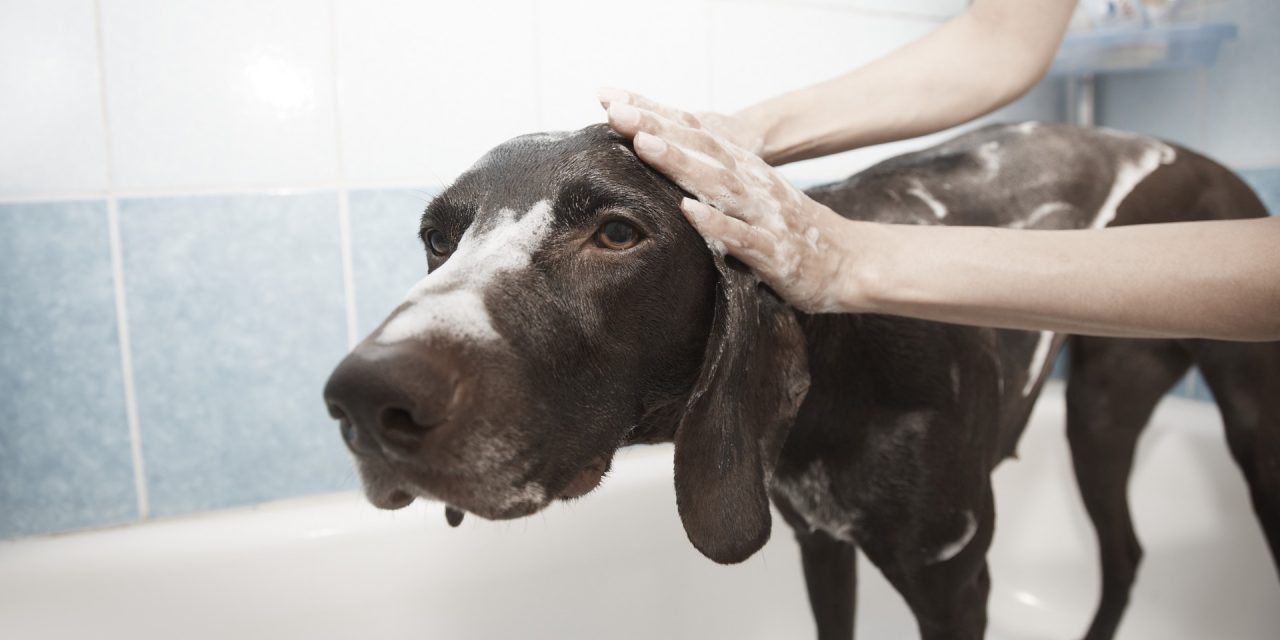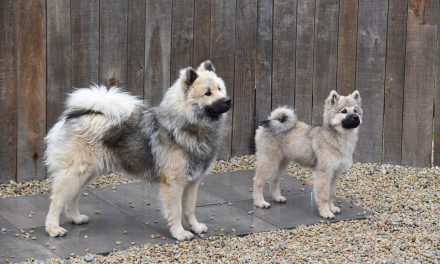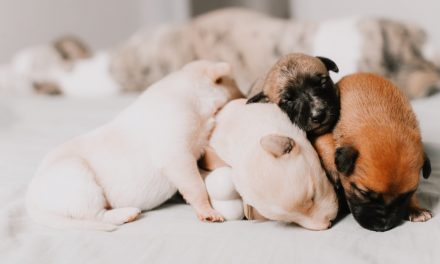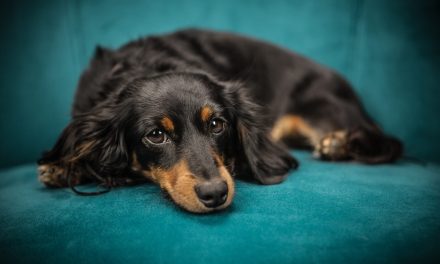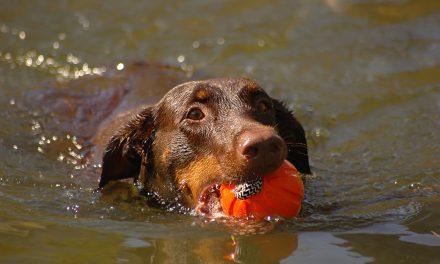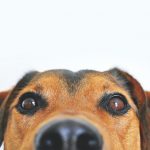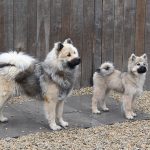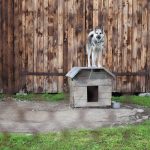- Home
- /
- Blog posts
- /
- Dog Grooming – How...
There are two options when it comes to grooming your dog. The first of which is to take them to a reputable dog groomer, and the second is to groom them yourself at home. If you are taking your dog to be groomed externally, make sure that you are taking them to a reputable company so that you can trust that your dog is getting the correct care that they need in a safe environment. Before mentioning what you can do yourself at home to groom your dog, here are some pros to consider about professional dog grooming:
- They already have the correct tools and equipment ready to use
- Groomers are trained to know exactly what they are doing
- Appointments can save time whilst working around your schedule
- Groomers can take care of unpleasant treatments that you may not want to do yourself
If you are planning to groom your dog yourself, the amount of grooming that you need to do will depend on the breed that you own. However, dog grooming should be done regularly. It’s important to be patient and set aside plenty of time for a grooming session so that you can take your time and make sure that you are doing everything correctly. You should pay attention to how your dog reacts, as more often than not, they will let you know if you are doing something that hurts them or makes them uncomfortable. Some dogs may happily sit and be groomed for hours on end, but others may need to take breaks more often and that’s alright too. It could also be helpful to have treats on standby to reward good behaviour and praise them for doing a good job.
What to expect from our article
Tools for Grooming
The first thing that you will need to have to hand when grooming your dog at home is the correct tools to do so. Some tools that you may need or that will be helpful to have, include:
- A brush or comb
- Scissors
- A cloth
- Clippers
- Shampoo
- Nail clippers
- Detangling spray
- Toothbrush and toothpaste
- Ear and eye wipes
Brushing Your Dog’s Coat
Certain breeds may need to have their fur brushed out more than others. Long haired breeds should be brushed weekly to avoid their fur getting matted or tangled. Pin brushes are particularly good for brushing out longer or thicker fur because they help to remove dead fur from the dog’s coat. It can also be beneficial to use an additional product such as detangling spray to help make the process easier. Thick fur is likely to become tangled, and using a detangling spray will help prevent discomfort and will also help to prevent damage to their coat. Short coated breeds will need brushing less often because their fur doesn’t get matted or tangled as easily. Brushing their fur every couple of weeks will help to remove loose hair. A rubber brush works well to do this and to bring dirt to the surface.
For technique, you should brush down and out, away from the dog’s skin. Always brush in the direction of their fur. It’s also important to be gentle and to take your time brushing out areas that are very matted. Mats can get close to the dog’s skin and be painful to brush out.
Bathing and Washing Your Dog
Bathing is a very important part of dog grooming when it’s needed. The most obvious reasons to bathe your dog are to keep them clean by removing dirt from their coat and to get rid of unpleasant odours. Dogs shouldn’t be over-washed and only really need to be bathed when necessary. If they are bathed too often, it can dry out their skin as it strips away the essential oils on the skin, which can cause issues.
Dogs have sensitive skin, and their pH levels are different to that of a human. This means that you should use a shampoo that is designed specifically for dogs. If your dog has issues with their skin, it’s a good idea to contact your vet first for advice on what shampoo to use. There are also conditioners available to help prevent dryness that can be caused by shampooing.
You can either choose to wash your dog indoors or outdoors. Some dogs may be easier to wash outdoors if they are larger dogs, or are particularly difficult when it comes to bathing. You can use a garden hose to do this, by attaching it to the hot tap using an adapter. As an alternative, you could use warm buckets of water or set up an outdoor dog bath.
For smaller or calmer dogs, an indoor bath may be easier. You should never leave your dog unattended in the bath and it’s best to use a shower attachment instead of filling the tub. Make sure that the water isn’t too hot or too cold to keep your dog comfortable.
If you brush your dog before bath time, it can make the washing process easier by getting rid of tangled fur. You should completely wet your dog’s fur down to the skin and avoid the face area. It is often easier to clean the face afterwards with a damp cloth or wipes to lessen the risk of getting shampoo in their eyes, mouth or ears.
Once they are completely wet, you can start to shampoo them. Use a high quality shampoo that is safe for use with dogs. Start at the chest area and work your way around to the rest of the body. It is important to note that you should test the shampoo that you are using on a small patch of the body before use to make sure that they don’t have a negative reaction to it. Gently massage the shampoo to create a lather, making sure to get all the way down to the undercoat. Next, you can rinse the product from their fur until there is no shampoo left.
You can opt to use a conditioner to help prevent dryness if you think that it is needed. The last thing that you need to do is dry them off with a towel.
Cutting and Trimming Fur
Some dogs may need to have their fur trimmed and it is really important to be careful when doing so. If you don’t feel confident using scissors or clippers to trim their fur, then it may be best to seek the help of a professional groomer.
When using scissors, make sure to never point the scissors directly towards your dog. Some areas that commonly need trimming include:
- Around the eyes if the fur here is obscuring vision or is irritating the eyes
- Longer fur on their legs
- Hair around the anus that may be catching faeces
- Matted or tangled fur that can’t be brushed out
For trimming the body, it may be easier and safer to use clippers. You can buy clippers specifically for dogs but you can use ordinary ones. Be patient and work slowly, following the direction in which the fur naturally grows. Make sure that the clippers are sharp, so that they don’t tug on or get caught in the fur which will cause discomfort. Clippers can also get hot when used for an extended period of time, so it is important to check that they aren’t getting too hot as you don’t want to burn your dog’s skin.
Nail Clipping for Dogs and Healthy Paws
Normal daily exercise should help to keep your dog’s nails at a normal length as they naturally get worn down through walking. Generally, it is suggested that if a dog is standing, their nails shouldn’t be touching the floor. If the nails get too long, they can curl over and dig into the feet, so keep an eye on their paws to make sure that the nails aren’t getting too long.
If you have never trimmed your dogs nails before, it may be a good idea to seek advice from your vet or an experienced dog groomer that can tell you how to do it correctly. There are different tools and equipment that you can use to cut nails that are specifically designed for dogs. You only need to clip the tip of the nails, as cutting too far down will cause pain and bleeding. Make sure to gently fully expose the nail with your fingers so that you can see exactly what you are doing. You don’t need to cut past the curve of the nail as you can accidentally cut the blood vessels there.
As well as nail trimming, there are other steps that you can take to ensure that your dogs paws are healthy such as checking their footpads for injuries or infections and removing excess hair on the feet that may get matted.
Cleaning Dog’s Teeth and Healthy Gums
Dental hygiene for dogs is just as important as it is for humans. If their teeth aren’t clean, it can lead to a build-up of plaque and even dental disease. Dental disease is actually quite common in dogs and can cause them pain and discomfort. Some symptoms of dental disease to look out for can include:
- Bad breath
- Difficulty eating (can lead to weight loss)
- Red and inflamed gums
- Loose, missing or broken teeth
- Facial swelling
- Saliva containing blood or excessive drooling
- Pawing at the face (sign of distress)
If your dog is showing signs of dental disease, contact a vet immediately. To prevent such diseases, you should regularly brush your dog’s teeth. It is best to start this routine from when they are puppies so that it becomes normal to them. Human toothpastes are not suitable for dogs and you will need to purchase a toothpaste that is specifically designed for dog use.
You can buy toothbrushes for dogs that go over your finger. Alternatively, you can use an adult toothbrush for larger dogs and a child sized toothbrush for smaller dogs. You can also purchase dental chews that can help maintain oral health in dogs.
Monitoring Eye Health
Signs that your dog’s eyes are healthy are when they are clean and free from dirt and are white in colour, not yellow or red. If your dog is squinting or their eyes have discharge, redness or cloudy eyes, then they may have a problem. There are different tests that a vet can do to check your dog’s eyes, so if you notice a problem, make sure to contact them as soon as possible.
The majority of the time, you shouldn’t need to use anything more than a damp cloth to clean their eyes. Gently but firmly, wipe around the eye area to remove any dirt or build up that may cause problems, but be careful not to directly touch the eyes. Don’t use soap or shampoo as this can cause irritation and even damage to their sight.
Tear staining is when dark blotchy areas form on the hair around the eyes of some dogs. The discolouration is more noticeable in lighter coloured dogs, and is caused when the eye produces an excessive amount of tears that then react with the bacteria on the dogs fur. Sometimes, not always, it can be an indication of an underlying condition. You can clean these tear stains with a damp cloth. Failing this, you can use products or solutions that are designed to help with this problem.
Ear Cleaning
Keeping your dogs ears clean is an important part of their grooming routine. Whilst some dogs may never need to have their ears cleaned, others require their ears to be cleaned to avoid a build up of dirt which can lead to an ear infection. Breeds of dogs that have longer ears are at a higher risk of developing an ear infection, but all breeds can get one. You should regularly check your dog’s ears to make sure that they are healthy.
Over cleaning the ears can cause irritation and so they should only be cleaned if they do not look or smell normal. Normal ears should be clean, pink and odourless. If your dog is shaking his head more often than usual, or their ears look red and inflamed or smell bad, you should contact your vet for a check up. Trying to clean an infected ear yourself may cause more harm than good.
To clean your dog’s ears, you can just use cotton balls. Avoid using cotton buds, or anything with a pointed shape as it can push dirt further into the ear and cause complications. You can buy vet-approved ear cleaning solutions that can help clean the ears. All you need to do after this is take a damp cotton ball and wipe away any excess dirt.
Dog Anal Gland Care
Your dog has anal glands that are located on either side of the anus. They produce a fluid that has a distinctive smell that helps other dogs to identify each other. Healthy anal glands will express this fluid during a bowel movement or even when your dog is walking around or stressed. They do not have the ability to do this process voluntarily. However, if the anal glands do not function properly, it can make bowel movements difficult or painful.
Impacted anal glands can often be releived by manually squeezing out the fluid that they contain yourself. It isn’t the most pleasant process as the fluid produces a strong smell. You can take your pet to the groomers to have this done, but they can also show you how to do it yourself at home.
Signs of impacted anal glands can include soreness, problems sitting down and a fishy smell, even after washing.
Dog grooming can be an extensive and time consuming process depending on the breed of dog that you own. You can opt to do certain parts of their grooming routine yourself or you can have the groomer take care of all of these important steps. The level of grooming that you can do depends on the individual. As long as you’re comfortable, and have a good knowledge and understanding of what you’re doing, then you can work these steps into your routine at home.

